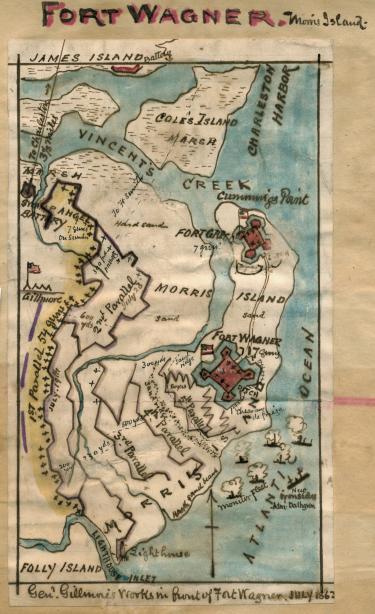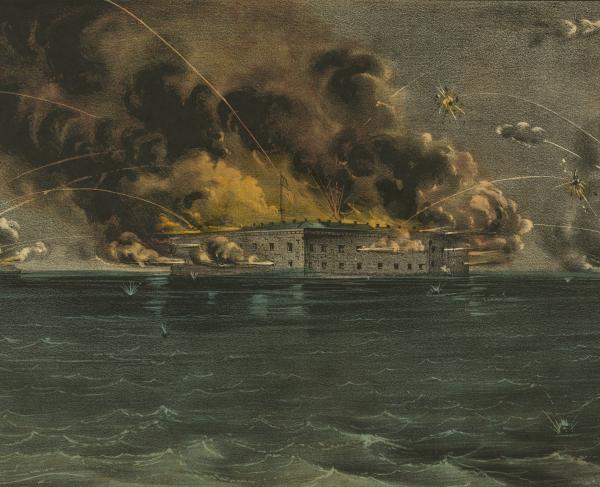The Defenses of Fort Wagner


Fort Wagner, also known as Battery Wagner, was a sand and earthen fortification located on the northern end of Morris Island outside of Charleston, South Carolina. Fort Wagner covered the southern approach to Charleston Harbor. It was considered by the Union to be one of the toughest beachhead fortifications due to its location near a natural bottleneck that restricted soldiers from engaging the fort en masse.
Fort Wagner was named after the late Lieutenant Colonel Thomas M. Wagner. It was 250 yards in length by 100 yards in width. Fort Wagner’s walls measured a staggering thirty feet and were constructed from sand and dirt. The walls were supported by logs and sandbags lined within the walls and around the walls. The fort had a total of fourteen cannons, with the largest cannon being a 10-inch Columbiad cannon. Surrounding half of the fort was the Atlantic Ocean. On the other half of the fort, there was a ten-foot-wide by five-foot-deep moat filled with water, buried land mines, and abatis (sharpened sticks). Manning the fort were 1,700 men from the 1st South Carolina Artillery, 21st South Carolina Infantry, 31st North Carolina Infantry, 22nd Georgia Infantry, Charleston Battalion, Gist Guard of South Carolina, Mathewes of South Carolina, and the 51st North Carolina Infantry led by Brigadier General William Taliaferro.

The defenses of Fort Wagner kept the Confederates comfortably well defended for some months. From early July to September 7, 1863, the Confederates held the fort with relative ease. One of the most well-known assaults on the Fort was the Second Battle of Fort Wagner on July 18, 1863. The battle involved the 54th Massachusetts, an all-Black regiment that led the assault on the fort. The Union assault amassed 1,515 casualties compared to the Confederate’s mere 174 casualties. General George Crockett Strong and Colonels Robert Gould Shaw, Haldimand Putnam, and John Lyman Chatfield were all killed or mortally wounded in the assault. After the Second Battle of Fort Wagner, the Confederates withstood the siege from the Union Navy and Army until September 7, 1863, when the Confederate forces evacuated the fort, resulting in a costly but important victory for the Union.
The defenses of Fort Wagner foreshadowed modern siege defense tactics used throughout modern history. The fort featured zigzagging lines; a feature of modern trenches used in World War I. There were also precursors to modern firearms, such as multi-barreled Requa guns. Requa guns and other firearms produced during the Civil War were early forerunners of automatic firearms that first saw action in World War One and used throughout the 20th and 21st centuries.
Fort Wagner’s place in the Civil War was more than simply being a fort. It was where the first African American, William Carney, earned the Medal of Honor. It was where one of the first African American infantry regiments was provided with the opportunity to illustrate their bravery and courage in battle. It was where the precursor of modern trench warfare originated, as well as the precursors to modern weaponry, was put to the test.
Further Reading:
- Gates of Hell: Campaign for Charleston Harbor, 1863 By: Stephen R. Wise
- Battery Wagner: The Siege, the Men Who Fought, and the Casualties By: Timothy E. Bradshaw Jr.
Related Battles
1,515
174


